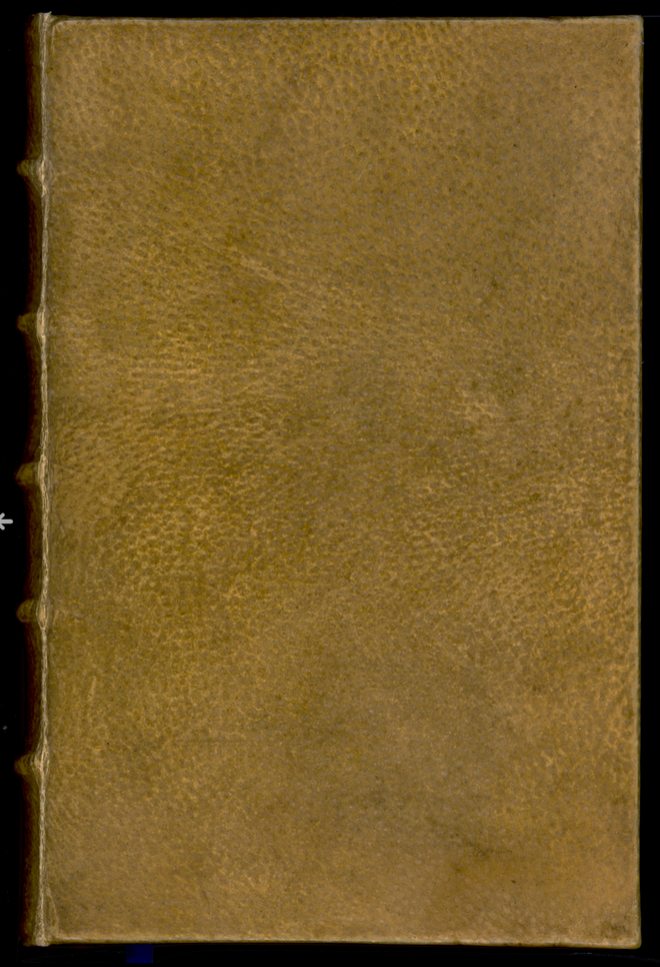Scientists Prove Book on Life and Death in Harvard Library is Bound in Human Skin

A meditation on the meaning of life and death by the French novelist and poet Arsène Houssaye, which has been sitting in the hallowed halls of a Harvard library since the 1930s, has been shown beyond a doubt to be bound in human skin.
Several scientific tests carried out at Harvard have led Senior Rare Book Conservator Alan Puglia to say he is 99.9% confident that the binding "is of human origin".
The book, entitled Des destinées de lame (Destinies of the Soul), a meditation on the soul and life after death, was written by Houssaye sometime in mid 1880s and presented to to his friend Dr. Ludovic Bouland, a noted medical doctor and prominent bibliophile.
According to the Houghton Library, Bouland bound the book with skin from the unclaimed body of a female mental patient who had died of a stroke.
Bouland wrote a note about the strange step he had taken and inserted it into the book:
"This book is bound in human skin parchment on which no ornament has been stamped to preserve its elegance. By looking carefully you easily distinguish the pores of the skin. A book about the human soul deserved to have a human covering: I had kept this piece of human skin taken from the back of a woman. It is interesting to see the different aspects that change this skin according to the method of preparation to which it is subjected. Compare for example with the small volume I have in my library, Sever. Pinaeus de Virginitatis notis which is also bound in human skin but tanned with sumac."
The book found its way into the Houghton Library at Harvard when it was donated in 1934 by book collector John B. Stetson Jr.
Des destinées de l'ame was one of three books which Harvard had identified among its collection of 15 million volumes which it believed were covered in human skin.
Sheep, goat, cattle, human

Back in April, one of these books, Practicarum Quaestionum Circa Leges Regias Hispaniae which contained the inscription "the bynding of this booke is all that remains of my dear friende Jonas Wright, who was flayed alive by the Wavuma on the Fourth Day of August, 1632" was shown to actually be bound in sheepskin.
The other possible example, a French translation of Ovid's Metamorphoses held at the Countway Library's Center for the History of Medicine, has also been proven conclusively to be bound in sheepskin.
To conclusively prove Des destinées de l'ame was bound in human skin, microscopic samples were taken and were analysed by peptide mass fingerprinting, which identifies proteins to create a "peptide mass fingerprint" (PMF) allowing analysts to identify the source.
This allowed the scientist to eliminate other common parchment sources such as sheep, cattle and goat but they couldn't conclusively rule out other closely related primates, such as the great apes and gibbons.
The next step was to use Liquid Chromatography-Tandem Mass Spectrometry (LCMSMS) to determine the order of amino acids, the building blocks of each peptide, which are different in each species.
"The analytical data, taken together with the provenance of Des destinées de l'ame, make it very unlikely that the source could be other than human," said Bill Lane, the director of the Harvard Mass Spectrometry and Proteomics Resource Laboratory.
Anthropodermic bibliopegy
While books bound in human skin are now objects of fascination and revulsion, the practice was once somewhat common.
Termed anthropodermic bibliopegy, the binding of books in human skin has occurred at least since the 16th century. The confessions of criminals were occasionally bound in the skin of the convicted, or an individual might request to be memorialised for family or lovers in the form of a book.
© Copyright IBTimes 2024. All rights reserved.






















